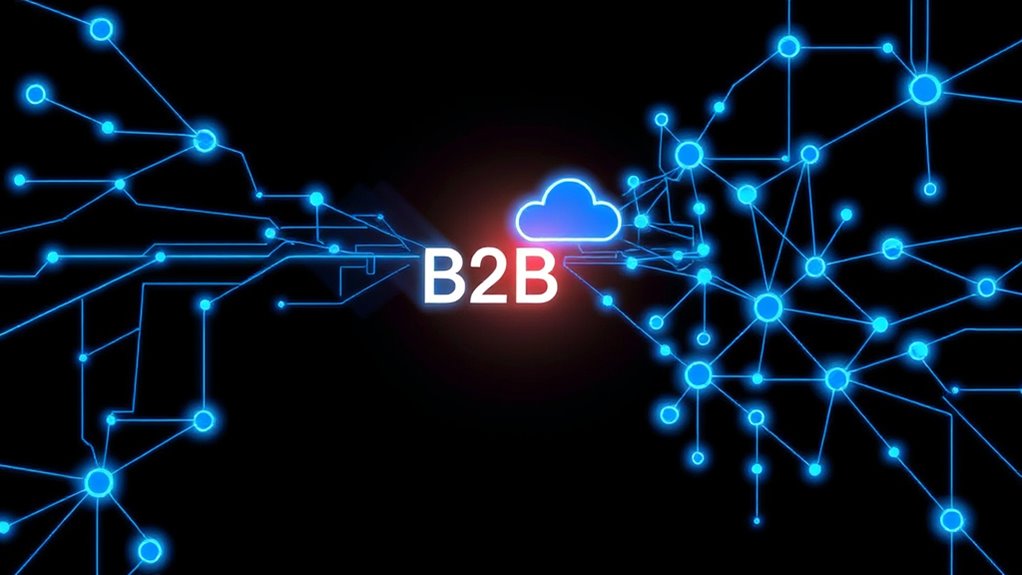B2B integration and EDI serve different roles in business communication. EDI represents a specific standardized format for exchanging structured business documents electronically, primarily through batch processing. In contrast, B2B integration encompasses a broader range of technologies, including EDI, APIs, and various data exchange methods, enabling both real-time and batch communications between trading partners. While EDI reduces data errors by 40%, B2B integration can decrease operating costs by 35% and offers greater flexibility. Understanding these distinctions helps organizations optimize their digital transformation strategy.

The evolving landscape of business-to-business communications has given rise to two distinct yet interconnected approaches: B2B integration and Electronic Data Interchange (EDI). While EDI represents a specific standardized method for exchanging business documents electronically, B2B integration encompasses a broader scope that includes EDI along with other technologies like APIs and various data exchange methods. The increasing adoption of real-time APIs allows organizations to enhance their supply chain processes with immediate data access and responses.
EDI operates through standardized formats such as ANSI X12 and EDIFACT, primarily focusing on batch processing of structured business documents. It utilizes secure protocols like AS2 and SFTP to transmit data safely across the internet. This technology has proven particularly valuable in industries such as retail, manufacturing, and logistics, where it has demonstrated the ability to accelerate order processing by up to 61% while notably reducing manual errors. Implementing EDI solutions has shown to reduce data errors by at least 40 percent in orders, invoices, and shipments.
EDI’s standardized formats and secure protocols revolutionize business document exchange, delivering dramatic improvements in processing speed and accuracy across multiple industries.
B2B integration, on the other hand, takes a more thorough approach by incorporating multiple technologies and methods to connect different business systems. It combines traditional EDI capabilities with modern API-based solutions, enabling both batch and real-time communication between trading partners. This flexibility allows organizations to streamline their entire business operations, from inventory management to logistics and billing, potentially reducing operating costs by more than 35%. The implementation of standardized protocols helps businesses achieve seamless communication while minimizing operational errors.
The distinction between these approaches becomes clearer when examining their practical applications. EDI excels in handling high-volume, standardized transactions, making it ideal for routine business documents like purchase orders and invoices. B2B integration extends beyond these basic functions to facilitate real-time data exchange, support dynamic business processes, and enable rapid partner onboarding.
Both approaches contribute notably to business efficiency and growth. EDI provides the foundation for reliable, secure document exchange, while B2B integration offers the flexibility and scalability needed in today’s digital business environment.
Organizations often implement both solutions, leveraging EDI’s established standards and B2B integration’s broader capabilities to create thorough, future-ready business communication systems that enhance supply chain visibility, improve customer satisfaction, and guarantee regulatory compliance.
Frequently Asked Questions
What Security Protocols Are Commonly Used in B2B Integration Systems?
B2B integration systems employ multiple security protocols to protect data exchanges.
TLS and SSL encrypt data during transmission, while AS2 provides secure EDI document transfer using digital certificates.
SFTP and PGP/GPG offer additional file encryption options.
Authentication methods include X.509 certificates, OAuth tokens, and two-factor authentication.
VPNs create secure tunnels between partners, and HTTP/S enables protected API communications.
Message digests and digital signatures guarantee data integrity.
How Long Does It Take to Implement a B2B Integration Solution?
B2B integration implementation typically takes 3-6 months for small to medium projects and 6-18 months for complex enterprise solutions.
The timeline varies based on several key factors:
- Number of trading partners
- Internal system complexity
- Types of protocols required
- Level of customization needed
- Available resources and expertise
Organizations with established documentation, standardized processes, and dedicated IT teams can achieve faster implementation times.
In contrast, those requiring extensive partner onboarding or custom development may face longer timelines.
Can Small Businesses Benefit From Implementing EDI Solutions?
Small businesses can greatly benefit from EDI solutions through multiple advantages.
These include reduced operational costs from eliminating manual data entry, decreased error rates by approximately 30%, and improved cash flow through faster transaction processing.
EDI enables SMEs to compete more effectively with larger organizations while streamlining supplier and customer relationships.
Modern cloud-based EDI solutions offer affordable, scalable options with minimal technical requirements, making implementation accessible for smaller companies.
What Are the Typical Maintenance Costs for B2B Integration Platforms?
B2B integration platform maintenance costs vary based on company size and implementation scope.
Small to mid-sized businesses typically spend $50,000-$150,000 annually, while large enterprises may exceed $250,000.
Core cost components include licensing fees, infrastructure expenses, support services, and software updates.
Cloud-based solutions offer predictable monthly fees based on transaction volumes, while on-premises implementations require higher upfront investment plus ongoing maintenance costs.
How Do Cloud-Based EDI Solutions Compare to On-Premise Systems?
Cloud-based EDI solutions differ from on-premise systems in several key aspects.
Cloud EDI operates on subscription models with predictable monthly costs, while on-premise requires substantial upfront investment.
Cloud solutions offer superior scalability and flexibility, enabling quick capacity adjustments and partner integrations.
Implementation is faster with cloud systems, which handle maintenance automatically.
However, on-premise solutions provide greater direct control over security and infrastructure changes.









